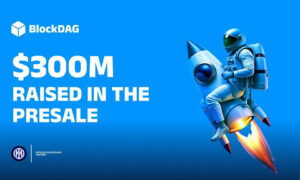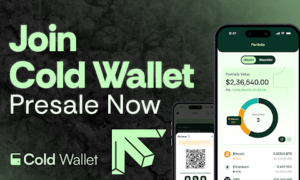In the dynamic realm of blockchain technology, Polygon (MATIC) has emerged as a game-changer, particularly in the sphere of gaming. The convergence of blockchain and gaming has given rise to innovative possibilities, and Polygon stands at the forefront, reshaping the landscape with its unique features and capabilities.
Introduction
The Rise of Polygon (MATIC) in Gaming
Polygon, formerly known as Matic Network, is a layer 2 scaling solution for Ethereum. While it initially gained recognition for enhancing the scalability of Ethereum, its impact on the gaming sector has been nothing short of revolutionary. The blockchain gaming industry has long grappled with challenges related to scalability, high transaction costs, and slow confirmation times. Polygon addresses these issues head-on, offering a scalable and efficient solution that is tailor-made for gaming applications.
Scalability and Low Transaction Costs
One of the primary hurdles blockchain gaming faces is the scalability bottleneck. Traditional blockchains, including Ethereum, often struggle to handle a large number of transactions simultaneously, leading to slow processing times. Polygon employs a Layer 2 scaling solution that significantly enhances the throughput of the Ethereum network. This allows for a seamless gaming experience with fast transaction confirmation times and minimal latency.
Moreover, Polygon’s architecture enables low-cost transactions, making it economically viable for gamers to engage with decentralized applications (dApps) on the blockchain. The reduction in transaction costs opens up new possibilities for microtransactions within games, creating a more inclusive gaming ecosystem where even small transactions can be executed efficiently.
Enhanced User Experience
User experience is paramount in the gaming industry, and Polygon excels in this aspect. The fast transaction speeds and low costs contribute to a smoother gaming experience, eliminating frustrating delays and high fees that users might encounter on other blockchains. Gamers can enjoy a seamless and immersive experience without the hindrances typically associated with blockchain transactions.
Furthermore, Polygon’s commitment to user-friendly interfaces and developer tools simplifies the onboarding process for both gamers and game developers. This accessibility is crucial for the widespread adoption of blockchain gaming, as it encourages a broader audience to explore decentralized gaming platforms powered by Polygon.
Interoperability and Cross-Chain Capabilities
Polygon’s significance in gaming extends beyond its scalability features. The platform is designed to promote interoperability, allowing for seamless integration with other blockchains. This interoperability is a game-changer for developers who can now leverage multiple blockchain networks to create cross-chain gaming experiences.
The ability to move assets and data seamlessly across different blockchains enhances the overall gaming ecosystem. Polygon acts as a bridge between various blockchain networks, fostering collaboration and innovation in the gaming industry. This cross-chain functionality opens doors to new gaming experiences, enabling players to interact with diverse ecosystems and assets within the blockchain space.
Decentralized Finance (DeFi) Integration in Gaming
Polygon’s influence on blockchain gaming goes beyond technical enhancements. The platform’s compatibility with decentralized finance (DeFi) protocols introduces a new dimension to in-game economies. Game developers can integrate decentralized financial tools, such as liquidity pools and yield farming, into their gaming ecosystems.
This integration enables players to earn real value through their in-game activities. Gamers can trade in-game assets, participate in decentralized exchanges, and engage in yield farming, creating a symbiotic relationship between gaming and decentralized finance. Polygon’s support for these DeFi functionalities enhances the economic model of blockchain games, providing players with tangible incentives and fostering a more sustainable gaming ecosystem.
NFTs and Ownership in Gaming
Non-fungible tokens (NFTs) have become a cornerstone of blockchain gaming, representing ownership of in-game assets. Polygon seamlessly integrates NFTs into its gaming infrastructure, allowing for the creation, trading, and ownership of unique digital assets.
The use of NFTs in gaming ensures that players have true ownership of their in-game items. This ownership is recorded on the blockchain, preventing fraud and providing players with the assurance that their virtual assets are secure and unique. Polygon’s commitment to NFT standards ensures compatibility with a wide range of gaming platforms, fostering a unified and interoperable NFT ecosystem.
Community and Developer Support
Polygon’s success in revolutionizing blockchain gaming can be attributed, in part, to its vibrant community and developer support. Polygon’s widely adopted platform attracts developers with its scalable and user-friendly gaming technology. The Grants Program encourages innovation, accelerates ecosystem growth, and attracts both established and indie developers.
Conclusion: A New Era for Blockchain Gaming with Polygon (MATIC)
In conclusion, Polygon (MATIC) leads in blockchain gaming with innovative features like scalability solutions, interoperability, DeFi integration, and NFT support. Its comprehensive approach and community collaboration make it a frontrunner, promising a more accessible, scalable, and immersive gaming experience.



































